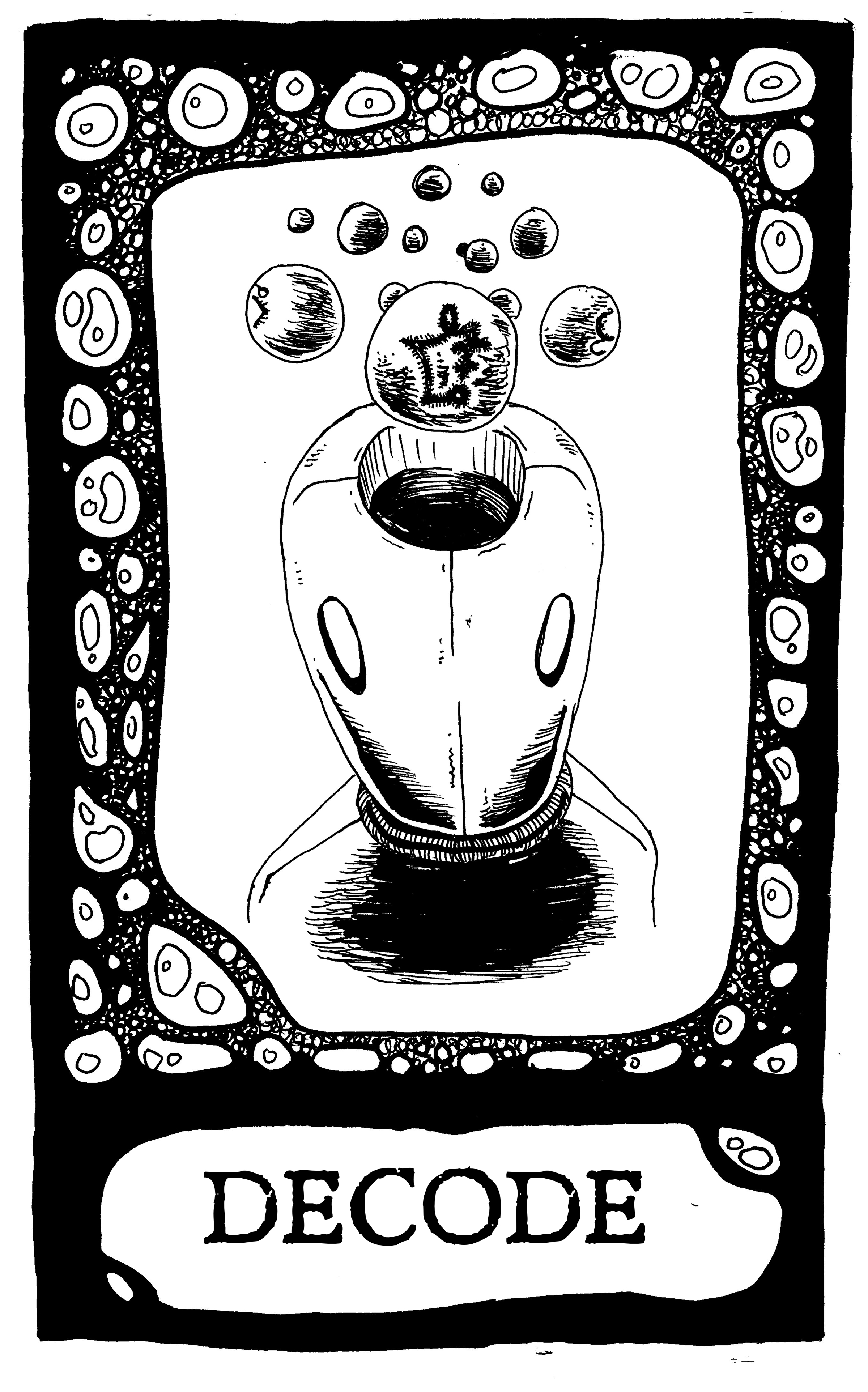The Disruption Generator is a living experiment and theoretical oracular device. It starts from this question:
What can true randomness do once installed into the divination thought form?
William S. Burroughs believed that our traditional perceptions of words and images control our minds, tethering us to the more conventional modes of perception, thought, and speech. I believe the same can be said of our most trusted systems and tools when relied upon without a balancing influence.
Although seemingly random, oracular devices such as the tarot or i-ching are firmly based in a system of tradition, history, and archetypal visualization. There are prescribed spreads and interpretation. Like any other systems, familiarity can lead to dependence and creative inertia.
The Disruption Generator has none of this. It is a truly random device, rooted in instinct and chance. While tarot cards or hexagrams of the i-ching are based in pre-established definitions, the Disruption Generator aims for outliers and the unknown. Every word is chosen by a random word generator, meditated upon, interpreted into whatever the word may inspire visually, and made into a “card.” This card will function much like a single card Tarot pull, useful for simple questions and conundrums. I will come up with my own personal interpretation for the word and image in writing but suggest that you find your own meaning in the “card.”
Artists such as the Dadaists, Brion Gysin, and the above mentioned William S. Burroughs believes that disparate elements could be combined to create a desirable result. I am applying similar principles to an oracular practice.
I don’t propose that the Disruption Generator replace your chosen oracle, only that perhaps it can supplement it, injecting much needed novelty into an otherwise orderly system.
Will the Generator work as intended? Will it push you into a reality tunnel filled with synchronicities? Will you notice the word of the day popping up in random conversation? Will you see aspects of the visualization in your surroundings, revealing details previously unknown? Or will this experiment be a failure? Who knows? I only hope that this can be a new and useful tool in your toolbox.
The first draw feels like a beginning wrought with mystery and synchronicity.




